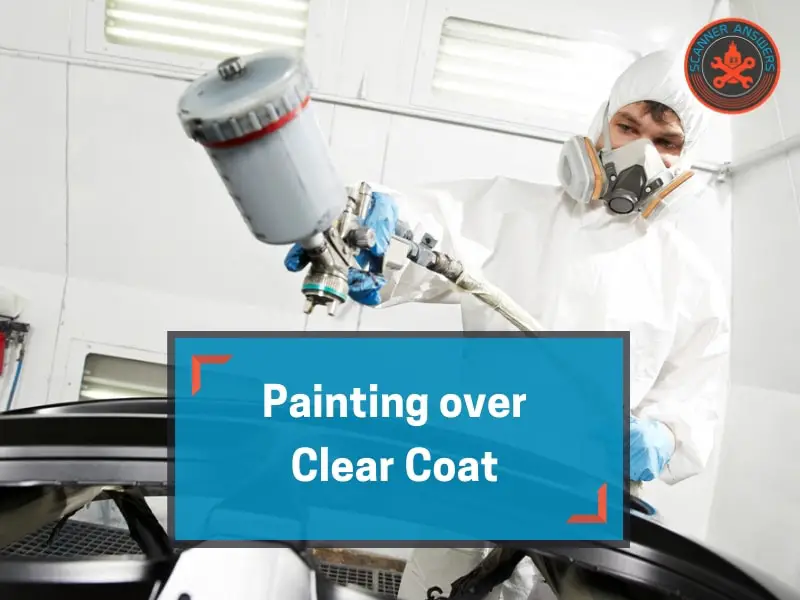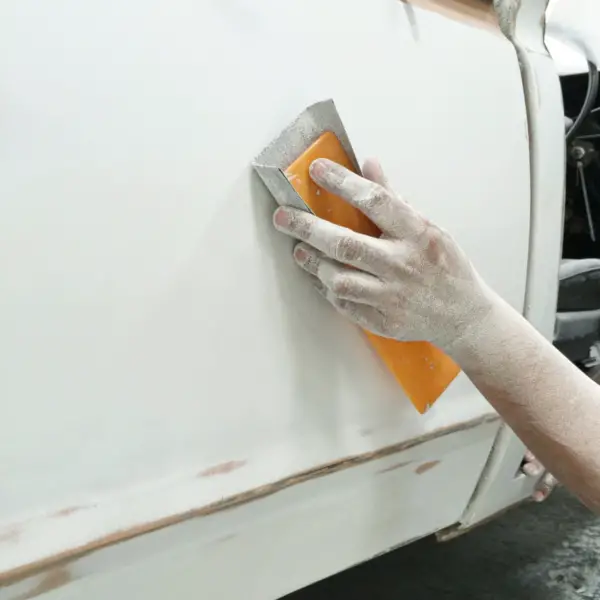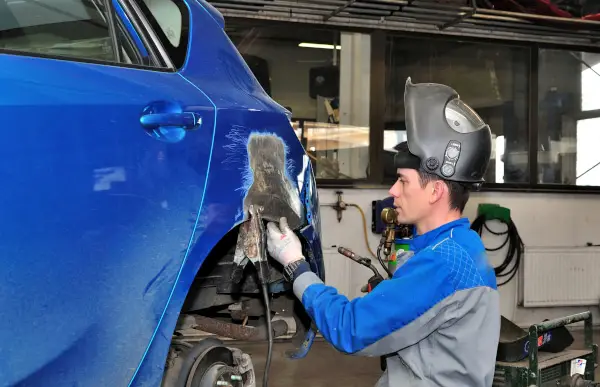My name is Matt and today we’re discussing painting over clear coat. But don’t forget this one thing that always gets neglected. Sanding.
It doesn’t matter if the job is big or small. If you want to apply paint over clear coat, you’ll need to sand the area first before doing so. (A tool like the Porter Cable 7346SP or 7424XP is a great choice)

What is clear coat?
Clear coat is a transparent layer of paint or resin. It is applied over the base coat to protect the color against wear and oxidation. But best of all, clear coat is responsible for that deep, glossy shine on a perfect paint job.
While clear coat is tough enough to offer a defensive armor against the elements, constant exposure to harmful UV rays and harsh weather will cause the clear coat to fade or wear out. This is the primary reason why it’s important to regularly wax the paint. If clear coat is formulated to protect the base coat, wax is necessary to protect the clear coat.
Can you paint over clear coat directly?
No. Like I said, you can paint over clear coat but you’ll need to sand off a layer of the clear coat before applying paint.

Of course, this only applies if the body panel is in relatively good condition. But if there are deep scratches, marring, flaking, or oxidation on the paint, the best thing to do is to sand off all the clear coat to erase the damage. Surface preparation is key before painting over clear coat. If you just spray base coat over clear coat, the paint will not adhere to the surface, which will only result in an ugly finish.
For example, let’s say you’re looking to paint the fenders in your ride. If the surface is relatively free of large defects, the trick is to lightly sand the area to remove a significant layer of the clear coat. After sanding is done, you can safely apply two or more layers of color. Of course, you’ll also need to apply a fresh layer of clear coat to protect the finish and give it a smooth gloss.
How do I remove clear coat from car paint?
Simple. The trick is to wet sand the panel.
First, watch this Youtube video from Apex Detail to figure out how to wet sand clearcoat.
Now, this procedure is only recommended if the surface is free from large defects. You can also choose to apply a layer of primer before painting, but you can achieve great results even if you don’t use primer.
- Clean the body panel using water and car shampoo. This will help remove loose surface dust, dirt, and oil.
- Wipe the panel dry using a microfiber towel.
- Next comes the sanding process. Grab a piece of 400-grit sandpaper and soak it in a bucket of clean water for five minutes.
Grab a spray bottle filled with clean water and begin sanding. Spray enough water and wet sand the surface using a back-and-forth motion. Do not press your fingers on the sand paper. Instead, place it in the palm area of your hand so you can apply even pressure.
Make sure the surface is always wet when sanding. Spray more water if required. By this time, you will notice a milky or whitish residue as you sand. This is the clear coat being removed from the top of the base coat.
The technique is to sand the panel evenly, but don’t sand too much. The goal is to remove the gloss from the paint. You’ll know the panel is ready if the surface is smooth and dull. - Wash the panel with clean water and wipe dry. Now is also a good time to inspect the area and check for uneven areas. Remember, the job entails removing the gloss from the paint and NOT the paint itself.
- The panel is now ready to be painted with the color of your choice. However, it is best to wipe the panel with alcohol or grease remover before applying the paint.
Do I need to apply primer?
No. Of course, you can choose to apply primer after wet sanding if you prefer. But the base coat and partially removed clear coat serves as the perfect primer for a new coat of paint.
If you burn through the clear coat and body paint to the bare metal, you will need to apply primer to prevent rust.

But be warned. This only holds true if the panel is in near-perfect condition. And by that I mean no traces of deep scratches, flaking, oxidation, or any type of deep imperfection. In case the panel is riddled with damage, the next best thing is to sand all the way to the base coat to remove the scratches.
How many coats of paint are required?
This will all depend on the type of paint and method of application. Generally it is advisable to apply two or three light coats of fresh paint. Remember, it is always best to apply multiple light coats than to apply a thick and heavy coat.
Should I apply fresh clear coat?
Absolutely.
Applying a fresh layer of clear coat will not only protect the newly-painted surface, but it will also add gloss and shine. Similar to the rules in applying paint, multiple thin coats are better than a single thick coat.
Apply the clear coat approximately 30 minutes after the base coat is applied. As a general rule, it is best to apply 3 to 5 coats of clear, and waiting 10 minutes between each coat. The clear coat should be dry to the touch before applying the next layer. Allow the clear coat to cure for at least 24 hours in warm weather before wet sanding with 1500-grit sand paper. This will safely remove orange peel or other imperfections to reveal a flawless finish.
Should I wax freshly applied paint?
No. Vehicle Wax will basically seal the paint and may affect the curing process of freshly applied paint and clear coat. However, it wouldn’t hurt to apply pure polish instead, but only if you need to further refine the finish. Do not wax for at least 30 days.
Painting over clear coat will save you time and money. However, make sure to wet sand the surface. Paint will not adhere properly on smooth clear coat. Be sure to take your time with sanding and surface prep BEFORE painting or you will likely regret it!